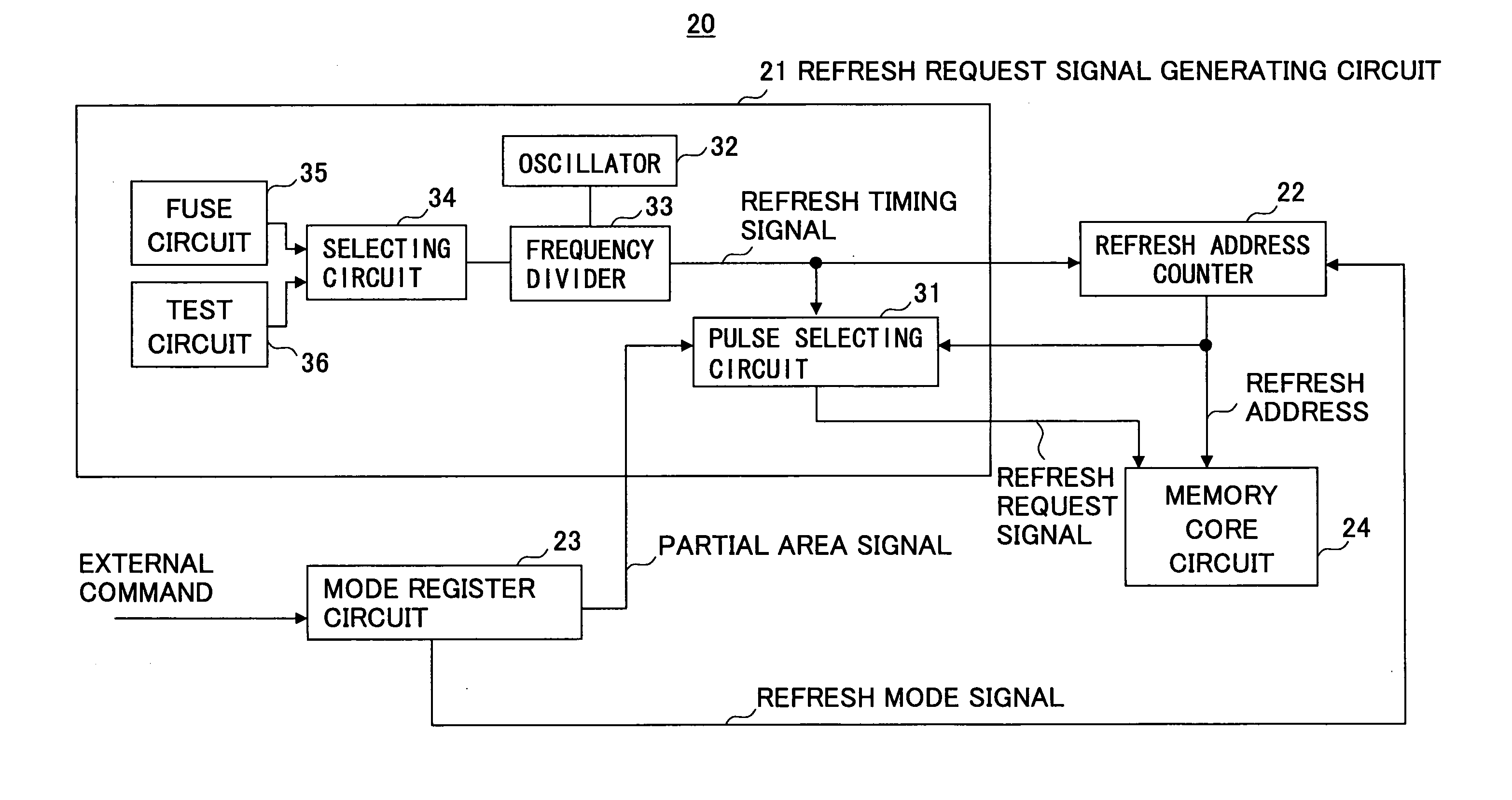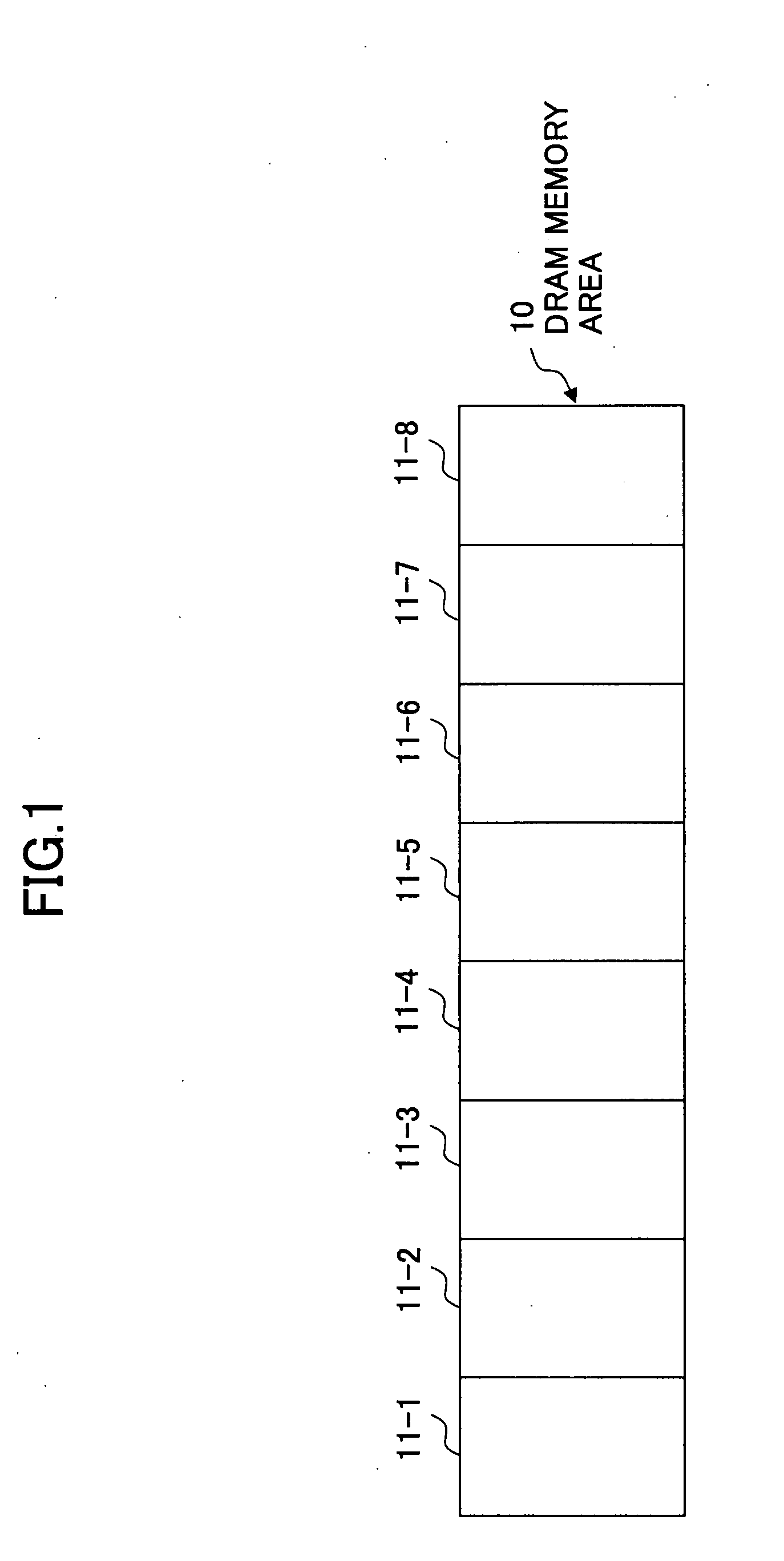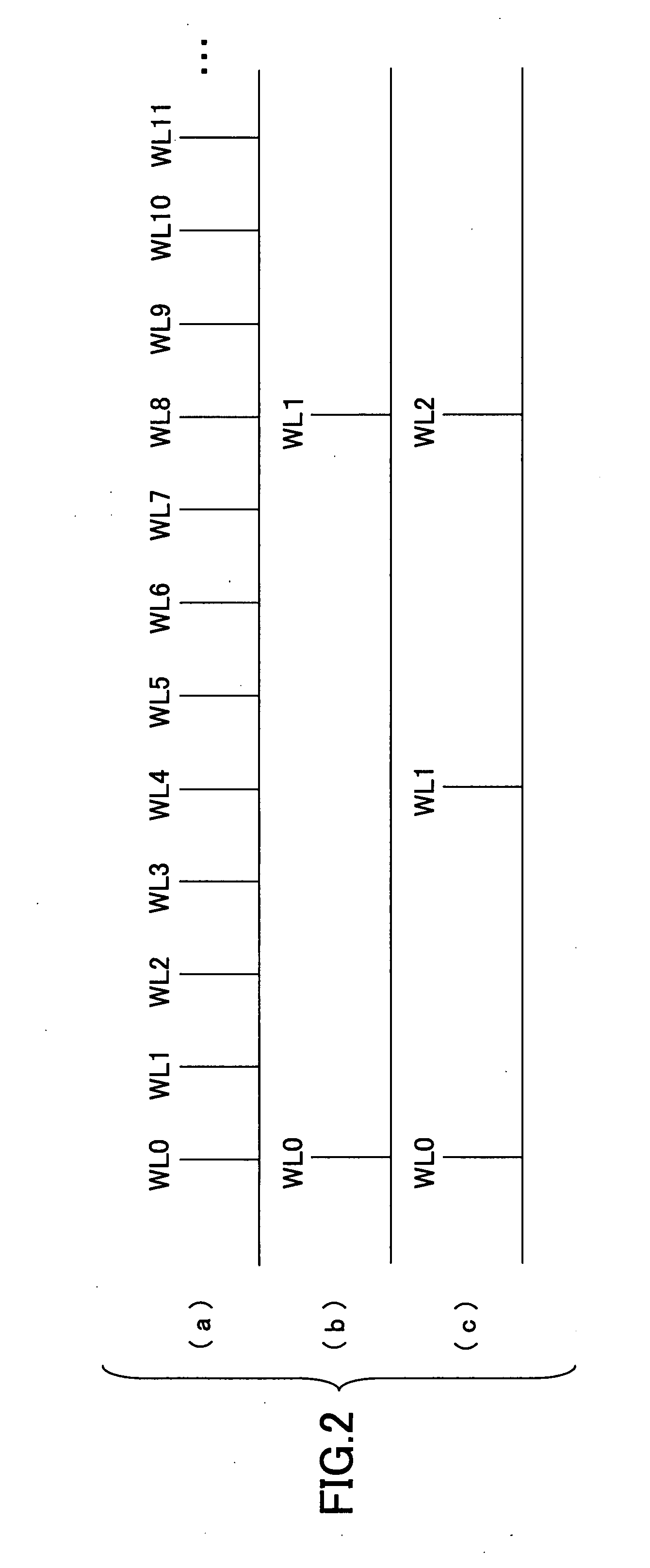Semiconductor memory device with partial refresh function
a memory device and memory technology, applied in the field of semiconductor memory devices and memory systems, can solve the problems of srams consuming almost no electric power, each refresh operation ends up consuming electric current, and the operation time of batteries becomes a problem
- Summary
- Abstract
- Description
- Claims
- Application Information
AI Technical Summary
Benefits of technology
Problems solved by technology
Method used
Image
Examples
Embodiment Construction
[0035]In the following, embodiments of the present invention will be described with reference to the accompanying drawings.
[0036]FIG. 3 is a drawing showing an example of the configuration of a semiconductor memory device according to the present invention; A semiconductor memory device 20 of FIG. 3 includes a refresh request signal generating circuit 21, a refresh address counter 22, a mode register circuit 23, and a memory core circuit 24.
[0037]The memory core circuit 24 includes a memory array, a row decoder, a column decoder, etc. The column decoder decodes a column address supplied from an external source, and activates a column selecting line specified by the column address. The row decoder decodes a row address supplied from an external source at the time of routine read / write operation, and activates a word line specified by the row address. Further, the row decoder decodes a refresh address supplied from the refresh address counter 22 at the time of refresh operation, and a...
PUM
 Login to View More
Login to View More Abstract
Description
Claims
Application Information
 Login to View More
Login to View More - R&D
- Intellectual Property
- Life Sciences
- Materials
- Tech Scout
- Unparalleled Data Quality
- Higher Quality Content
- 60% Fewer Hallucinations
Browse by: Latest US Patents, China's latest patents, Technical Efficacy Thesaurus, Application Domain, Technology Topic, Popular Technical Reports.
© 2025 PatSnap. All rights reserved.Legal|Privacy policy|Modern Slavery Act Transparency Statement|Sitemap|About US| Contact US: help@patsnap.com



